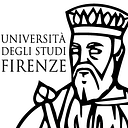The œconomia of iron and steel: Material transformations, manual skills, and technical improvement in early modern Sweden
From Firenze University Press Book: The knowledge economy: innovation, productivity and economic growth, 13th to 18th century
In the preface to Regnum subterraneum sive minerale de ferro, from 1734, the Swedish philosopher and mining official Emanuel Swedenborg placed his ambitious text within a framework of proto-enlightenment ideals, stating that it should be in the interest of all individuals to «contribute to sciences and professions coming to a richer prosperity» (Swedenborg 1923, xxvi). He took aim at the advancing «field of metallurgical science», more precisely the processing of iron. De Ferro was divided into three parts, sequentially introducing the reader to production methods, assaying, and chemical experiments. This order was not chosen at random, as the author stated that an improved understanding of work processes provided a sound foundation for knowledge about finding «riches and treasures hidden in the ores, and make fuller use of them», while also enabling «as much experimentation as chemical science with its furnaces and abundance of appliances» (Swedenborg 1923, xxiv). Thus, Swedenborg imagined a bottom-up process, starting with the procedures by which nature was transformed into useful matter by working men. Swedenborg was indeed not alone in stressing the materiality of work as the basis for metallurgical inquiries. In France, René Antoine Ferchault de Réaumur promoted «ingenious practices» attached to the «manipulation» of nature. Rejecting old alchemical principles, his work gave inputs to the «practical investigation of materials», but it also «made the body of the artisan a subject of observation and experimentation». Embodying these values, L’art de convertir le fer forgé en acier, from 1722, linked the pursuit for improvements in the iron and steel trade with ideas of a general «technical and economic advancement», put into motion by the uniting efforts of learned men and benevolent politics (Bertucci 2017, 54–5; 61–8). Similar endeavours took place in the German lands, where, according to Ursula Klein (2012; 2017), «savant officials» of cameralist administrations played crucial parts in shaping the evolving field of metallurgical expertise. Réaumur’s book provided inspiration for Swedenborg, with references and transcripts being made throughout De Ferro (Zenzén 1923, xvi; Fors 2015, 96–7). However, there were areas where the two authors differed, notably so regarding artisanal work. Réaumur, despite his emphasis on metalworking practice, distanced himself from artisans, whom he saw as «automata» and «obstacles to the encyclopedic endeavour» (Bertucci 2017, 55). Inventions would instead be spread from «the savant’s laboratory» in a top-down fashion (Bertucci 2017, 74), primarily benefitting those «who can put artisans to work, just as artisans can put their tools to work» (Réaumur 1956, 8). Swedenborg connected craftwork to knowledge-making in a somewhat more nuanced way, stressing that the know-how of «smiths, smelters, and suchlike professionals» should be «preferred or at least equated with much scientific insight», since it was «altogether connected with the actual work». Consulting artisans’ «experience and knowledge», from the «practical domain», was thus a key in making «countless of secrets» known to the «scientific world». Still, and in line with Réaumur, this was not the same as to suppose anything «brilliant or ingenious» to arise out of the metalworkers’ everyday toil; they were, after all, «simple people with sooty faces like the Cyclops». Moreover, the wider spread of useful know-how could hardly be entrusted to those involved in the «making of metals». Trade secrets held sway among artisans, and some of them went to great lengths to guard skills and technical competencies, thereby «withholding them from the eyes of working peers» (Swedenborg 1923, xxiv-xxv). Unlike this «envious group» of people, members of «the society of learned Muses», to which Swedenborg included himself, would never evade from bringing valuable knowledge into public light (Swedenborg 1923, xxv-xxvi). The metal trades, being of considerable economic interest to early modern European states, was a well-chosen area for such a project. Swedenborg had gathered an extensive experience from working within the Swedish Board of Mines (Bergskollegium), a state organ that was deeply involved in the cross-border circulation of technical knowledge (Fors and Orrje 2019). In 1716, he was elected to an extraordinary position in the Board and from 1724, he held a permanent position as assessor. He made several tours in Sweden, inspecting mines and ironworks, and also travelled in Europe, gathering information about metalworking (Zenzén 1923, xiv-xv; Dunér 2013–19, 498–500; Fors 2015, 83–97). Swedenborg’s practical experiences are reflected in the rich palette of techniques described in De Ferro, with Sweden at the centre, but with detours to Europe. Read along other eighteenth-century printed treatises and handwritten memos, the book highlights the complex set of work methods that formed the basis of metal processing. This body of written sources informs us about, with Ursula Klein and Emma C. Spary’s (2010, 19) words, «the continuous trafficking between material manipulations, explanations, and uses, and … the various purposes served by made materials and claims to material expertise.» Zooming in on the making and adaptation of iron and steel, our text proceeds from such an objective, as it aims to scrutinise the changing interplay between manual practices, nature, and technology within the early modern knowledge economy. In doing so, we show how the working of metals in furnaces and forges was closely related to ideas of improvement in the northern outskirts of enlightenment Europe. Moreover, our discussion provides insights into the interactions between material makings and perceptions of work in a society that was still, albeit to a gradually lesser extent, dominated by ideas of a divine order.
DOI: 10.36253/979–12–215–0092–9.15
Read Full Text: https://books.fupress.it/chapter/the-conomia-of-iron-and-steel-material-transformations-manual-skills-and-technical-improvement-in-ea/13611
